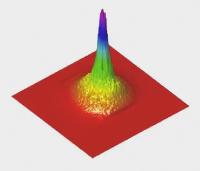Jan 31 2011
Engineers at Princeton University have designed a laser sensor that may enable soldiers to identify bombs hidden underground from afar. It could also help measure emission of greenhouse gases and other air-borne pollutants.
According to Richard Miles, a professor of mechanical and aerospace engineering at the university, it may be possible to transmit a vibration signal into the environment and receive a response. Miles is heading the research and has co-authored the paper, "The returning beam interacts with the molecules in the air and carries their finger prints."

The new technique differs from the previous remote laser-sensing methods in that the returning beam of light is not just, the return ray of light, which comes in response to the signal sent out and it is not an image or dispersion of the outgoing signal. It is a completely new laser ray emitted by oxygen atoms, in which the electrons react to high energy levels. This air laser is a powerful unit to measure air pollutants. Funding for the research came from the Office of Naval Research's basic research program on Sciences Addressing Asymmetric Explosive Threats. The research results were published on January 28 in the journal Science.
The method uses a UV laser pulse focusing on a tiny spot of air. Within this cylinder hot spot barely 1mm long, oxygen atoms get "excited" when their electrons are heightened to high energy levels. Once the vibration ends, the electrons return to their original position and send out infrared light, some of which travels down the cylinder and in the process, it causes more of the electrons to return to their original position magnifying and forming the light into a decisive laser beam. This beam is aimed at the original laser. The team now plans to check the returning light to identify the name and origin of pollutants. The strong returning signal will also help identify smaller amounts of airborne pollutants such as explosive gases. The team is expected to design a compact solution that can be fitted atop a tank or other vehicle to scan expressways for the presence of bombs and other explosives.
Source http://www.princeton.edu/